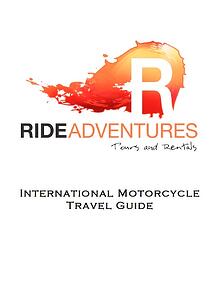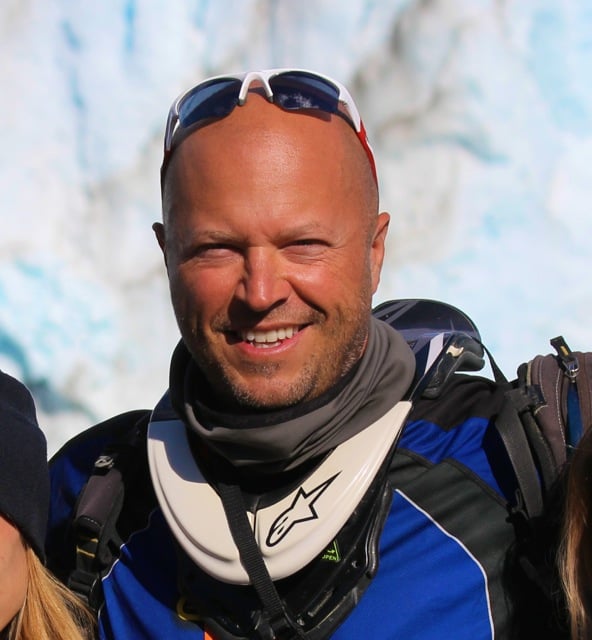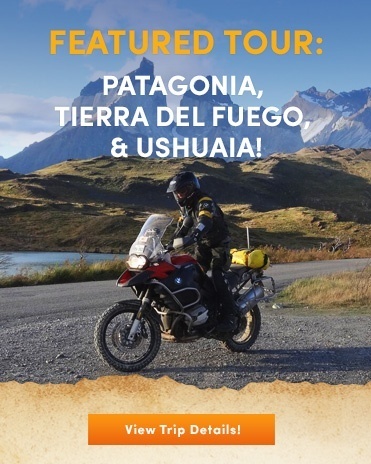Motorcycle travel and your success in doing so internationally will hopefully be much easier after enjoying our advice shown below. The first points of Part 2 cover your fuel situation and food, and please remember you can always download a full copy of our International Motorcycle Tour Guide on this link!
PART 2
TRAVELING IN YOUR DESTINATION COUNTRY
FUEL
 Finding it, buying it, and being successful with it might not be the same as in your home country. Consider these points or potential issues to help you on your journey:
Finding it, buying it, and being successful with it might not be the same as in your home country. Consider these points or potential issues to help you on your journey:
1) Scarcity – In many areas where “adventure travel” is popular, fuel can be hard to come by. Long distances between fuel stations and the often unreliable supply chain that feeds them can mean that, even if you’ve found the only fuel station within 300 kilometers, they might not have fuel available when you get there. The general rule here is: Fill up more often than you need to and stay way ahead of plan on your needs. (Frequent fueling gives good opportunity to get off the motorcycle and take a break, too!)
Consider also fueling up when arriving at your destination each day. No matter how tired you are or how much you might want to get out of that dirty motorcycle gear, the only fuel station in town might run out of fuel overnight, and not have another fuel supply arriving for a few days. It’s happened to many of us, so don’t let this happen to you!
2) Octane & Dieseling - Especially with the high-performance engines in the motorcycles we rent, the highest-possible octane for fuel should be used. Higher-octane fuel will help minimize the dieseling or “pinging” noise that your engine makes while you ride. Dieseling or pre-combustion of fuel due to low-quality fuel can cause irreparable damage to an engine and leave you stranded along the road. If your engine is dieseling or making that “pinging” noise like this, a few things that may help are:
- Maintain a higher RPM of the engine by downshifting gears. Higher RPM’s mean the engine’s intake is of a lower density, and therefore has less chance of compressing and igniting by pressure (dieseling.)
- Accelerate more “gently.” Twisting the throttle and dumping extreme amounts of fuel into the engine too quickly can cause such pre-ignition. Instead, slowly “ease” your acceleration and back off if you start to hear that “pinging” noise.
- Try a fuel additive like an “Octane Boost.” Reports on the validity of these are scattered, but some people to report an improvement in the amount of pre-ignition they experience. Available at many fuel stations, the ratio to mix into the fuel tank should be explained on the bottle.
3) The name for “fuel” can change from country to country. For example, “gas” in the United States becomes “bencina” in Chile, “combustible” in Bolivia, and “nafta” in Argentina. Just pay attention and you’ll blend in quickly when requesting it.
4) Pay attention to what the fuel pump says before the attendant starts pumping for you. Sad as it may be, some attendants will intentionally leave a small (sometimes significant) amount on the pump’s digital screen, thereby “adding” that to the amount you owe them after you’re done refueling. Many attendants are good-natured and will ask you to witness the “$0.00” reading before they start pumping. Some won’t however, and you’ll have little way of proving your case until it’s all over.
FOOD
Traveling in foreign countries might mean you’re not going to have access to food as regularly or as “timely” as you’re accustomed to back home. For example, in much of Latin America, wide-open spaces between tiny townships in remote territories can mean that you won’t come across any kind of a restaurant or snack shop for an entire day. When you do, your options might only be just that: A simple snack shop with candy, potato chips, and sodas available. (Not proper nutrition that some of us thrive on.) To help avoid fits of hunger and maintain some minimal amount of nutrition:
a) Always be thinking ahead about food and water. The itinerary you’ve chosen should give some indication to the availability of restaurants, but be sure to look ahead at each day, study your map, and plan ahead.
b) Always keep some minimal amount of snacks with you like nuts, fruits, or similar. Proper nutrition can keep a long an exciting day of adventuring from becoming a miserable experience due to a poorly nourished body.
Furthermore, the hours and availability of restaurants might be very different than what you’re accustomed to at home. In much of Latin America for example, lunch isn’t until 1pm, and restaurants don’t open for dinner until 8 or 9pm. Be prepared to adjust your schedule as such.


